|
A new community group has been formed with the single purpose of eliminating single use plastic bags in Manly by 2017. What a great goal! 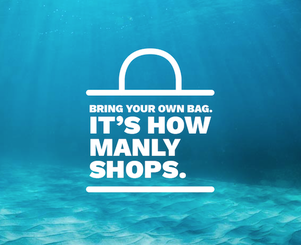 It takes a village - to go plastic bag free. That's the strategy powering community group Plastic Free Manly towards their ambitious environmental goals. The grassroots organisation has set 2017 - next year - as their target to rid Manly of single use plastic bags. Because social change only happens if everyone is on side, the environmentalists are talking to as many groups as possible, ranging from school children and their families to local businesses and large corporate entities. For the children there are family activity sheets and the story of Gertie the Turtle who swallowed a plastic bag and almost died. For businesses there is support for a transition away from plastic, and publicity to nudge shoppers into doing the right thing. Plastic Free Manly already has the support of more than 40 local retailers, Northern Beaches Council and Manly Chamber of Commerce. They are also working with grocery giant Coles on a local plastic reduction campaign. The need is pressing. Every day ten million new plastic bags are used by Australian shoppers. And the plastic in every one of them takes hundreds of years to break down. "Manly is special," former Manly councillor and Good For Manly president Candy Bingham said. "It's a village community, and it's full of people who care passionately about our oceans, wildlife and bush. We already have campaigns like Plastic Free July, which Good For Manly helped to introduce to Manly last year, and now this terrific group of women are taking it to a whole new level." Plastic Free Manly is run entirely by volunteers. To join their team and receive training as a Business Engagement Warrior or digital marketer, or just to find out more, please click the link below. http://www.plasticfreemanly.org
3 Comments
Upgrading Sydney Water’s North Head Sewage Treatment Plant - Latest Update
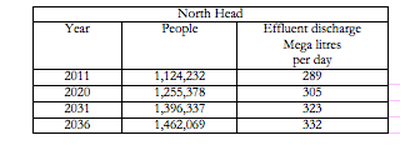 In the independent consultant’s report that was considered by IPART it was stated: “The case for two digesters appears to be based on growth projections to 2036” and the report listed the projection table below as one of three “KEY DOCUMENTS REVIEWED”. This is an interesting table but it is grossly inaccurate! Let us look at the details:
This means that IPART based its recommendation on false data. What is the current state of affairs?
Where does this leave us? At the present time Sydney Water captures about 30% of the solids that arrive at the plant - the rest is pumped into the ocean. If Sydney Water does not have the equipment to process the sewage then it would appear that one of the following options must occur:
These options are totally unacceptable. We have some questions for our Premier and local member, Mike Baird. Mr Baird can you tell us:
 A new campaign - There's No Excuse - Bin Your Butts is being championed by local group Bommie Australia. A new campaign - There's No Excuse - Bin Your Butts is being championed by local group Bommie Australia. TTwo thousand cigarette butts. That's how many are collected from Manly Cove every week by local cleanup group Bommie Australia. That's 10,000 a month! Organiser Jude Furniss said it takes the group just one hour to collect the rubbish. "It's an absolute disgrace," said Good For Manly president and former Manly Councillor Candy Bingham. "Congratulations to local groups who are working to fix the problem. But it should not be up to them to be responsible for Manly's rubbish collection." Smoking has been banned from Northern Beaches beaches for years, with Manly the first council to introduce a ban in 2004. But a spokesperson for the newly formed Northern Beaches Council said not a single fine had been issued in that time. Bommie Australia founder Jude Furniss said the council needed to do more to enforce no smoking areas, but the real solution was for smokers to stop throwing their butts on the ground in the first place. As well as organising beach cleanup days, Bommie Australia works to educate the community about the toxic effect of cigarette debris on our environment. Butts ends make an area look ugly and unloved, which often "permits" people to trash it even more. And when butts end up in the water - either because they were dropped directly on the beach or washed down through the stormwater system - they leach a toxic mix of chemicals, including cadmium, arsenic and lead, into our precious aquatic environmemt. As well the butts. which can survive in seawater for up to 5 years before breaking down, can be swallowed by marine life, including Little Penguins, with deadly consequences. "I am disgusted and stunned by people’s blatant littering and disregard for our beautiful surroundings," Ms Furniss said. "I'm asking smokers to clean up their act and take pride in where they live, work and play." Good for Manly says it's time for Council to take more serious action. Provide reciprocals for butts in popular areas, fine people who litter and encourage create marketing ideas to get the message across that there is no excuse - bin your butts!  The whole of Sydney was shocked when 26 of our little penguins were massacred by a fox last winter. The North Head little penguin colony has survived but now the birds face another threat. This time it's man made and may be even worse. Q station resort hotel wants to crank up the volume at its Quarantine Station site. The Mawland Group, which runs the hotel, has applied to change its planning controls, including boosting visitor numbers, and playing music in an outdoor area just metres away from little penguin nests. Just as worrying is a request to remove NSW Parks and Wildlife Service as co-proponents of the site, meaning that independent oversight would be minimised and Mawland would have prime responsibility for care of the Quarantine Beach penguin colony. "It's a terrible suggestion,” Good For Manly councillor Candy Bingham said. “That would mean that our beautiful little penguins, which are already right on the borderline of survival here on the mainland, would be left in the care of a company that has no environmental expertise, and is run for profit. I’m also concerned that Mawland has asked for its environmental audits to be decreased from every five years to every eight years,” The outdoor music plan is problematic as well. The proposal is to allow ambient dining music which would not exceed 50 dB - a volume similar to “conversation at home” - when measured at the edge of the outdoor eating area. While it’s true that the existing ban on any amplified music does impose limits on activities - such as weddings - at the site, and the hotel is not asking to play music loud; the penguin colony still needs to be taken into account. Of concern is that penguins choose quiet, secluded areas for their nests and the birds are active around dusk, when the music is likely to be played, with adult birds returning to their nests to feed their young at that time and mating pairs also likely to be disturbed. The same concerns surround the proposal to boost maximum permitted guest numbers from 450 to 600 people. “All this is less than one year after the endangered colony was savaged by a fox, sparking a massive effort by Parks and Wildlife staff and almost 100 volunteers,” Cllr Bingham said. “The group braved long, cold winter nights and freezing winds to physically guarded the nesting sites at Quarantine station, Collins Beach and Store Beach on a round-the-clock three-month-long vigil. What a disaster if their efforts went to waste.” The Mawland proposals are now before the Department of Planning and Environment. Images: Activities at Boilerhouse Restaurant, pictured at Quarantine Beach, may be ramped by. North Head and the Q Station complex including Quarantine Beach and jetty. It's crunch time for drink cans and plastic bottles. Public submissions into the State Government’s container deposit scheme have recently closed. The debate has been feisty, with environment and industry groups backing totally different schemes. The “Cash for Containers” scheme, supported by environment and many community groups, is modelled on schemes used successfully in South Australia and many European countries. It involves installing 500-800 reverse vending machines across the state, which would provide a 10 cent “reward” for every empty container deposited. In South Australia, where the scheme has been in place since 1977, 80% of drink containers are recycled, and a huge number of community groups have benefited from funds raised through container collection campaigns. The alternative “Thirst for Good” model is supported by Coca-Cola Amatil and other major players in the industry. It does away with the immediate cash reward, and substitutes “an annual investment by the beverage industry in a suite of programs aimed at reducing little”. Coca Cola says the industry will contribute $15 million each year in "both financial and non-financial incentives”, but environment groups say it will be more like $1 - 2 million. Green groups, including Boomerang Alliance, Greenpeace and Clean-up, have rubbished the plan, saying it’s "a PR exercise” not a container deposit scheme. Good for Manly agrees. “The crucial part of a successful scheme is to give cash directly to the person who has brought the drink container back, as an immediate financial incentive,” Good For Manly Cllr Candy Bingham said. “That makes all the difference.” The proposals will be considered by Permier and local member Mike Baird and Environment Minister Mark Speakman, with input from an advisory committee, with the government committed to have a container deposit scheme in place by next July. The two schemes as seen by environment group Boomerang Alliance  It doesn’t look like a fir tree, and you can’t wrap it with tinsel, but an underwater Christmas tree would be a great choice this holiday season. The idea comes from University of NSW scientists who are working to restore the seaweed forests that disappeared from Sydney’s coastline 30 years ago. Their plan is to crowdfund the work by inspiring people to sponsor individual “trees” that will be planted onto deforested underwater reefs. The disappearance of the once-thriving seaweed trees – crayweed (Phyllospora comosa) – is thought to be linked to the discharge of poorly treated sewage close to Sydney beaches in the 1970s and ‘80s. The Manly community led that fight with its famous POOO - People Opposed to Ocean Outfall - marches, and our water is much cleaner as a result. However, the crayweed colonies have not regrown. That’s where “Operation Crayweed” comes in. UNW scientists use fertile adult crayweed plants, which they “plant” in a biodegradable mesh attached to reefs about 2 to 3 metres down. The method has already created new, self-sustaining crayweed colonies at test sites at Cape Banks, Little Bay and Long Bay, and researchers are now ready to scale the project up and bring crayweed back to a 70km-long stretch of coastline between Palm Beach and Cronulla. It’s important because seaweeds are the “trees of our oceans, providing habitat, food and shelter for other marine organisms,” said UNSW marine ecologist Dr Adriana Verges. “When these forests disappear, it’s a sign that something has gone fundamentally wrong and diverse marine communities and economically important species such as rock lobsters and abalone disappear too.” It’s $20 to sponsor one tree, $50 for a little crayweed family that can reproduce on its own or $500 to plant a whole forest. Your Christmas tree won’t be on its lonesome. "We have been extremely humbled by the amazing response!" Dr Verges said. "We reached our original $20,000 target in only five days! We had planned to restore four sites, but we are now raising the bar and hoping we can raise enough to restore six or perhaps even eight sites. That would mean reaching $40,000 by January 31." To help visit the Operation Crayweed display at Manly Sea Life Sanctuary or go to pozible.com/project/202503 A trial of three solar pole lights are to be installed in Manly Lagoon Park shortly in an effort to improve public access after dark.  Runner in Lagoon Park at dusk Runner in Lagoon Park at dusk Manly council will install three “smart” lights in the narrow park that runs between North Steyne and Pittwater Rd. The move was prompted by Cr Hugh Burns after locals complained that the park, which has no lighting, does not feel safe after dark. The smart solar-powered lights will have motion sensors, meaning they are usually dim, but become temporarily brighter when a pedestrian or cyclist gets close. They cost $3000 each and will be placed at three key points on the park pathway for a six months trial. Cr Burns said the trial would assess whether the lights were bright enough for park users, but subtle enough to avoid disturbing people living next door. If the trial is a success, the next stage would be installing 11 more lights, bringing the total cost up to $35,000. The lights, which have a simple, compact design, will be similar to ones used in Gasworks Reserve at Little Manly Point. Lagoon Park links two well-lit areas and is popular with cyclists, joggers and dog walkers as well as people taking a short cut home after dark. Cash for Containers - the powerful drink container recycling strategy - will go ahead in NSW. Early this month premier and local MP Mike Baird announced a cash-back scheme for drink bottles and cans. Customers will be required to pay a 10c "deposit" when they buy a bottle or can, which they will then be able to reclaim at a reverse vending machine or community recycling centre. Schools and charities are likely to benefit too, by collecting containers and cashing them in to raise funds.
The decision is the result of a long-running campaign local government and green groups including the Boomerang Alliance, with the Manly community playing a major role. Manly Greens Councillor Cathy Griffin mounted a sustained and powerful campaign of her own. Almost every day for the last 12 months Cr Griffin has picked up bottles from the beach at East Esplanade and presented them to Mr Baird's office - just 100m away. Her technique demonstrated the almost unbelievable size of the problem. Australians buy a whopping 15 billion bottles or cans every year. And every hour we throw away or send to landfill almost one million of them. Drink containers are now the most commonly littered item in our parks and beaches with tourist areas, like Manly, particularly feeling the pain. In NSW we recycle less than 50% of our drink containers. In comparison South Australians, who have had a cash back scheme for decades, recycle 80% of theirs. With Cash for Containers, it's expected that NSW will get to an 80% recycling level too. That's great news for Manly - both from an aesthetic and financial point of view. Popular East Esplanade Reserve is just one place that's littered with bottles and cans every Friday, Saturday and Sunday. At the moment it costs the Council a fortune to clear it away - hours of council workers' time, and then $110 per tonne tip fees. The new scheme is a great start although it is expected that it will be sometime before legislation is in place. Meanwhile Australia's recycling industry still has a long way to go. Our existing recycling capability is so limited that a lot of our used PET plastic bottles are sent to China, where their ultimate fate is unclear. Green groups hope the Cash for Containers scheme will provide a much-needed impetus to help our recycling industry grow. Gone are the days when a visit to the local rubbish tip was a family outing. Dealing with rubbish has become big business, and a major cost to Councils.  Belrose tip has been swallowing our rubbish since 1965. But last month it accepted its final load. That leaves Kimbriki Resource Recovery Centre at Ingleside as our only local tip. And at present it can't accept putrescible waste (food, manure or nappies). The problem has forced the Shore Regional Organisation of Councils - Manly, Mosman, Pittwater and Warringah - to send rubbish half way across Sydney to Eastern Creek Landfill. It's a necessary solution but it comes at a price, with the four combined Councils now set to pay $14 million annually for the next three years for the service. But by then both Kimbriki and local residents will have a much bigger part to play. Residents will then be required to separate food waste from other household rubbish and dispose of it in the garden waste (green-lid) garbage bins. Kimbriki senior project officer Mark Winser says that step alone would cut in half the amount we throw into our general waste (red-lid) bins. It would mean 55,000 tonnes less "rubbish" going to landfill each year. "We already separate our recyclables. We already separate garden waste. We're asking people to take that next step," Mr Winser said. It's all part of Too Good to Waste - the regional waste strategy just released for Manly, Mosman, Pittwater and Warringah. The strategy, which treats waste as a resource rather than a liability, aims to increase household recycling rates to 70% by 2021. Kimbriki will get a major revamp as well. It's been kicked off with a $1.2 million State Government grant for better recycling and resource recovery capabilities at the centre. By 2017 Kimbriki should be able to sort and recover resources from commercial and household waste, as well as being able to process food and garden waste together to make high-grade compost for sale. That’s a good step in the right direction. UPDATE: DA to expand Clontarf Marina was approved by the Joint Regional Planning Panel, with some conditions in June. The majority of the panel formed the view that the proposal would not have a negative impact on Clontarf Bay and its surround foreshore despite major opposition. See full report & background information below. Background to Development Application Clontarf Marina plans a major redevelopment that will transform the look of Sandy Bay. Their original plans have been modified and they are asking for comments on the newly revised plan. A Modified Proposal has been lodged with Manly Council, for consideration by the Joint Regional Planning Panel (JRPP). The new plans are to remove a total of 41 swing moorings and replace the existing 21 vessel birth marina with a new marina containing 64 vessel births, above ground fuel tanks and alterations and additions to the boatshed. 18 existing swing moorings will also remain. General Manager of the Marina, Steve Jeffress, has issued a notice to residents, in which he states that: • The original footprint has been reduced • Environmental improvements have been made • Disabled access enabled, with a berth for water taxis and for private individuals The Clontarf Precinct Committee comments that the previous proposal would not have passed the MIAP Committee assessment and most of the same issues apply to this DA, although it is a modest improvement on the former proposal. The Precinct states: • While there is a reduction in the overall footprint with an increase in open water area compared to the former proposal this DA still has two long finger wharves extending a long way out into Sandy Bay. There will be walls of boats blocking views from the iconic foreshore walk. • If this DA goes ahead it will be supporting a small minority of large boat owners and depriving residents and visitors of the use of this wonderful public harbourside waterway. • Some residents fear that it will cause an increase in sound and light disturbance for those living on the slopes above. You can view the proposal at Manly Council or go online to their website under Development Applications and view number: 183/2012, Sandy Bay Road.
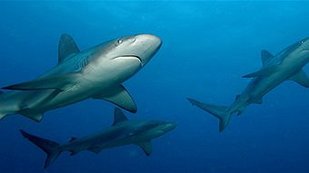 A circling shark fin is every swimmer's worst nightmare, and the recent death of surfer Zac Young near Coffs Harbour has refocused our emotions on the danger that lurks beneath. But are we really at risk? And if we are, do shark nets - our current shark prevention strategy - actually work? Shark meshing off Sydney's beaches was introduced in 1937 following a series of fatal shark attacks, including several on the Northern Peninsula. Most people think the nets are to stop sharks reaching popular beaches, but that's not true. The nets are there to kill sharks - specifically big (two metre long) sharks. Not only is this a controversial practice at a time when we are trying to protect Australia's declining shark population, but the nets kills a huge number of other marine creatures as well. Late last month, a whale calf drowned after it became entangled in a shark net off Mona Vale Beach. And so far this season, six whales have been caught, and luckily rescued, from shark nets off Queensland. Added up over several years, the carnage is sickening. Over the last 20 years almost 4000 sea creatures have been caught in shark nets off the NSW coast alone. Of these, less than 150 were "target" species - great white or tiger sharks. A massive 96 per cent of deaths were "bycatch" - giving a total of 3795 dead dolphins, turtles, whales, seals, stingrays, penguins, dugongs and harmless sharks. In a further irony it's reported that 35 - 50 per cent of sharks caught in the nets are on the beach side. However the meshing program, which is run by the NSW Department of Primary Industries, has plenty of defenders. Most point to the fact that there has only been one fatal shark attack in the meshed area, which includes beaches from Newcastle to Wollongong, since the program began. And that's despite the huge popularity of our part of the coast, which is enjoyed by 2 million people every summer season. But Dave Thomas, founder of local conservation group Eco Divers, isn't buying. "The risk of having a shark encounter is infinitesimally small," he said. "There are five fatalities in the world per year. There are a lot of things that will get you before that - hippos, vending machines, coconuts." Mr Thomas says the nets, which are 150m long, six metres high and sit in 10-12m of water, are by no good as a barrier as sharks can swim around or over them. What the nets do do well, is act as "indiscriminate killers of everything". He has the support of Surf Life Saving NSW which, along with marine ecologists and environmental and animal welfare groups, is calling for more research into alternative shark protection measures. Ideas already on the table include radio signals, sonar technology, electric nets and swimmer education. There's no debate that swimmers should avoid swimming at dusk, dawn or in murky water. They should also stay out of the water when schools of bait fish are about, to avoid being accidentally bitten by a shark in a "feeding frenzy". As well, shark nets were introduced in an era when our coastal waters were often dirty and sometimes contaminated with offal and blood, which meatworks used to dispose of in public waterways. The situation is so different now, surely our swimmer safety approach should change too. Good For Manly supports research into alternatives to shark meshing. In the meantime we believe the shark mesh season should be shortened. The nets are currently in place between September 1 and April 30, which overlaps the whale migration season from late April to November. This is our debate. There are shark nets off Queenscliff, North Steyne and Manly. Let us know what you think. Help us take a fair shark net proposal to Manly Council early next year.  Dinghy storage in front of 34 Stuart St Dinghy storage in front of 34 Stuart St A business plan for Little Manly foreshore may help to keep the harbourfront land in public hands. Manly Council voted this week to prepare a business case to help finance last year's purchase of No 40 Stuart St, which is ear-marked for demolition in the future to extend Little Manly park. The council had previously resolved to sell two properties - Nos 34 and 36 Stuart St - in order to fund the $4.2 million purchase of No 40. However the threat to public open space enraged residents who successfully took the council to the Land and Environment Court to block the sale. At Monday's meeting the council voted to consider financial options including raising the timber house at 34 Stuart St and using the space underneath for a paid dinghy and kayak lock- up facility. The dwelling could be used, for example as The Manly Coastal Environment Centre, thus saving the rental on the groups' existing premises. Deferring the transformation of No 40 into open space is also on the table, meaning the council could continue to receive rent from the property. Changing the council's loan on the property to interest-only repayments and increasing Manly's Environment Levy will also be considered. While councillors welcomed the development of a business plan, Cr Barbara Aird expressed concerns that, despite everything, the future of the beachfront land is still not secure. A motion, put by Crs Cathy Griffin, Hugh Burns and Aird to rescind an earlier decision to re-zone the Stuart St properties from 'open space' to 'residential' was deferred until next month. That means that the council's September decision to spot re-zone the four Stuart St properties on Little Manly beach, still stands. The council's four independent councillors and residents' group Save Little Manly Foreshore see the re-zoning as an attempt to circumvent the Land and Environment Court "no sale" ruling. Good For Manly councillor Candy Bingham welcomed the business plan proposal and congratulated Manly residents who fought to keep the land in public hands, particularly the Save LIttle Manly Foreshore Group and Cr Aird who fought for the vision for years at Manly Council. But she criticised the council for "wasting $200,000 of rate payers' money" in the Land and Environment Court. Council staff will now prepare a business case to be considered at next month's meeting. That meeting should also vote on the re-zoning rescission motion.  New work by Sydney Water should improve air quality at the North Head Wastewater Treatment Plant. The government agency plans to replace the plant's odour scrubber - air pollution control system - which is near the end of its life. Sydney Water released a statement this month saying it will replace the existing scrubber with nine bio-trickling filters and replace or repair associated infrastructure including duct work, a water tank and ventilation stacks. Odour scrubbers function to remove particulates and/or gases from industrial exhaust streams, reducing odours and improving air quality. The news will be welcomed by Manly residents, particularly in the Little Manly Precinct, who have regularly complained of bad smells from the plant. Sydney Water had previously said that the scrubber would not be replaced until 2015. Sydney Water has prepared a Review of Environmental Factors which will be publicly available from Oct 23 to Nov 11 at Manly Council, Manly Library and Manly Environment Centre. Information related to North Head odours and Manly's troubled existence with the sewerage treatment plant is below. This Odour Map, from a recent Sydney Water presentation, shows the spread of odours from the North Head Wastewater Treatment Plant. 1OU (odour unit) means that about half the population can smell an odour. A recent report from the NSW Ombudsman reveals poor maintenance and operational practices at the North Head Wastewater Treatment Plant and the difficulty in forcing the plant's owner, Sydney Water, to deal with the problem. The report, dated August 2013, deals with complaints made by several people about strong sewage odours on North Head on February 24 2010. The odours were so bad that people reported headaches, sore eyes, dry retching and difficulty breathing. The symptoms suggested an emission of hydrogen sulphide gas, probably caused by the North Head Wastewater Treatment Plant operated by Sydney Water. The matter was referred to the ombudsman's office after it was inadequately dealt with by the Environmental Protection Authority (EPA) - formerly the Department of Environment Climate Change and Water. The ombudsman found that the original EPA investigation had raised a number of serious concerns, including "an apparent failure" by Sydney Water to properly maintain or operate the North Head plant and equipment. Record keeping at North Head, and training and supervision of staff were also found to be problematic. However in October 2010 the EPA dropped the investigation without reaching a conclusion and without taking any action against Sydney Water. The ombudsman's brief was not to investigate the original odour offence, but to consider how the EPA had dealt with it. The report makes a number of recommendations aimed at helping the EPA force Sydney Water and other government agencies to comply with their environmental responsibilities. The ombudsman did not criticise the EPA's original investigation or take action against Sydney Water.
More information is available at sydneywatertalk.com.au
Let us know what you think? Should Sydney Water do more to make sure Manly's air and ocean outfall clean. Street after street in Manly have examples of 'Ausgrid Vandalism'. The relentless butchering of our trees by Augrid sub-contractors continues to be serious issue resulting in major damage to a number of heritage trees. The systematic need to remove established trees which have become unstable or unhealthy due to inappropriate, and continual, cutting of significant branches has become unacceptable.
For example, Ausgrid are about to remove four smallish trees on Seaview Street between Upper Beach and New Streets. The reason I understand is that they do not want the continual expense of pruning them. While aerial bundling is not the best solution, it would bring about a significant improvement. Under this method cables are bundled and insulated which means that contact with branches is much less of a problem and trees do not need to be as radically pruned. Currently the wires, apart from the Optus cables, are not insulated. Of course the best solution would be to underground the cables, but reality dictates that this is highly unlikely due to the enormous expense. A good example of bundling can be seen on Bourke St in Surry Hills. Some bundling has also occurred on Addison Road, Manly. Due to recent concerns raised by a number of Precinct Forum groups and local residents in the Manly area, a resolution was passed at the June 2013 Council meeting which included that steps be taken to halt the Ausgrid practices; that Manly Council develop a Tree Policy for the area, and that the possibility of aerial bundling be investigated. North Harbour & Little Manly Precinct groups in particular have been actively fighting this issue on behalf of local residents.  Spring Cove & Little Collins Beach, Manly Clr Cathy Grifin was successful in getting Council to agree to develop a Master Plan for the area known as Jump Rock and the unnamed reserve at the end of Stuart St leading to the National Park. Developers are currently developing the Spring Cove section of the St Patricks Estate. They have committed to work with the National Parks & Wild life Service to improve the path through the National Park to Collins Beach. As part of this development the unnamed reserve, which was dedicated to the public when the Church decided to apply to develop the Estate to provide access to the national park, a large section will be dug up to allow for various services to be connected to the estate. The bessa brick fence will be removed and the area will be subject to bush regeneration and some landscaping to preserve the habitats of the water dragons and bandicoots. This proposal seeks to take the opportunity to improve the public park area and access to the National Park and Collins flat from the Little Manly Point Park whilst other development is occurring in the area. This area represents a section of the world famous walk from Manly Wharf to North Head and in addition to the thousands of young people who pilgrimage to jump off Jump Rock thousands more walkers and runners pass through the area on their way to or from North Head. It is presently particularly unattractive with unsafe steps, worn mud tracks through the bush and the jail like fence on the cliff edge, damaged and open stormwater drains draining directly into Spring Cove, infestations of weeds, unattractive scrubby plantings and piles litter and human excreta. However the area is also home to an extraordinary array of wildlife including bandicoots, water dragons, possums, echidnas, and native birds, not to mention the stunning views across Spring Cove to the Sydney Harbour National Park. The proposal seeks to consult with the Little Manly Precinct and the local residents with the aim of landscaping the area including installing a track off the road below the current fence line from Little Manly Point Park to the unnamed reserve as well as the installation of appropriate safety fencing, seating and a grassed picnic area to take in the view across Spring Cove. Consideration could be given to the location of a public toilet to service the area. (residents are regularly approached by the public with requests to use their toilets) What would you like to see happen to improve Spring Cove and the adjoining bush area?  Image courtesy of Channel 7 News. It was concerning to read recently that Manly Cove has become the rubbish tip of Sydney Harbour. Rubbish from as far away as Bondi and Roseville is being found in the waters offshore. Currents in Sydney Harbour collect debris and bring it to Manly, especially when a southerly hits. Recent storms highlighted the problem with Manly Cove thick with debris and rubbish knee-deep on the beaches. Parking tickets from the Eastern Suburbs were found amongst the accumulated mess, providing clear evidence of the problem. According to Silke Stuckenbrock, local Narrabeen resident and co-founder of the Two Hands Project, people need to change their thinking about plastics and where they end up. “Plastic stays around for centuries. We have noticed that every mammal that gets washed up dead on to the shore has plastic in its system – it’s a very serious problem”, she says. What do you think we can do to keep Manly clean? Go to http://www.twohandsproject.org/ to find out how you can help.  Manly is home to a variety of beautiful marine life- but damage caused by high boat usage at Manly Cove West and Quarantine Beach could be putting our marine nurseries at risk. An Issues Paper placed on the NSW Department of Primary Industries (NSW DPI) website was developed after community concerns were raised about damage caused by high boat usage. Seagrass meadows in the North Harbour area, including populations of the recently listed endangered strapweed, Posidonia australis, are being denuded by boats, which not only damages the plants- it removes the safe environment they create for Manly’s native fish. The Issues Paper proposes several changes to the current anchoring restrictions to protect these populations. The paper also addresses concerns for the endangered Little Penguin population of North Harbour. If this is an issue you would like to see addressed, you can read the Issues Paper here :http://www.dpi.nsw.gov.au/fisheries/info/seagrass What do you think? Should there be boating restrictions in these areas?  As reported in The Australian (10/4/12), veteran Sydney property developer Phillip Wolanski is behind a new consortium called Spring Cove Developments which has won the development rights from the Catholic Church to compete the final stage on land surrounding the former St Patrick's seminary at Spring Cove, following withdrawal from the project by Lend Lease. It has been reported that the church will finance the project to the tune of around $200m and the substantial development will comprise houses and apartments in what is considered by locals as environmentally sensitive, pristine waterfront land. Locals at Little Manly first become aware that the development may be underway again when a number of mature trees where felled recently. Local environmental groups and residents will be working overtime to ensure that environmental controls are met, and penguin habitat protected, during development. If you want to know what was approved by the Council previously, too bad! The Council's latest controls of information means that no DAs older than 14 days can be accessed on the website. You can however fill out a two page form, lodge it and wait about 3 weeks to view it at the Council Chambers ..... 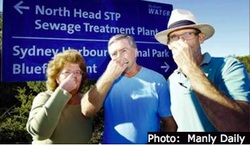 There has been many complaints made to North Head Sewage Plant about the smells from the plant drifting across residential areas. Last year DECCW (Dept. of Environment, Climate Change and Water) decided to investigate but the decision to prosecute Sydney Water stalled because supposedly they couldn't prove that the odours came from NHSTP. Visitors to North Head, the residents in the area, members of North Head Sanctuary Foundation, who spend a lot of time at North Head, can all attest to where the odours come from so why isn't something being done?. What concerns locals is that the smell is a combination of sewage odour and chemical treatment. What damage is being done to our environment, and to the residents who live in the path of the odour drift? Last year the federal government's National Pollutant Inventory showed Sydney Water's North Head plant dumped 24 kilograms of mercury off Manly in 2009-10. Although there has been a major upgrade of the facility, the smells still continue - which makes us wonder, what are the figures now? Just what, and how much is still being dumped off Manly?? Local member, Mike Baird, has convened a meeting this week with Sydney Water, local residents and the Infrastructure and Biodiversity Regulation. Let's hope we can get some answers, and solutions. (Residents should record dates of odour complaints and report incidents directly to EPA (DECCW) ph 131555 or John Keegan, who is monitoring the issue on behalf of Little Manly Precint: [email protected]. What do you think about this issue?  The overflow stormwater pipe at North Steyne has been an eyesore for years and the cause of many an accident, one in particular causing a surfer to become a paraplegic. The Council has received two independent reports stating that the removal of the pipe will have minimal effect on the waves at North Steyne but local surfers claim that rain water coming out of the pipe changes the sand banks and therefore conditions. Should it stay or go? What do you think? |
AuthorCandy Bingham, Deputy Mayor & Manly Ward Councillor on Northern Beaches Council. Background in marketing, public relations and community engagement. Author of five business books. Former Lady Mayoress of Sydney. Aka Candy Tymson. ........................................
View Videos
|
||||||||||||||||||||||||
|
Contact our team |
Site design by Manly Mac Art.
We acknowledge the Traditional Owners of the Northern Beaches and pay our respects to Elders past, present and emerging.
Authorised by Jonathan Trope, 1/90 Lauderdale Ave, Fairlight 2094






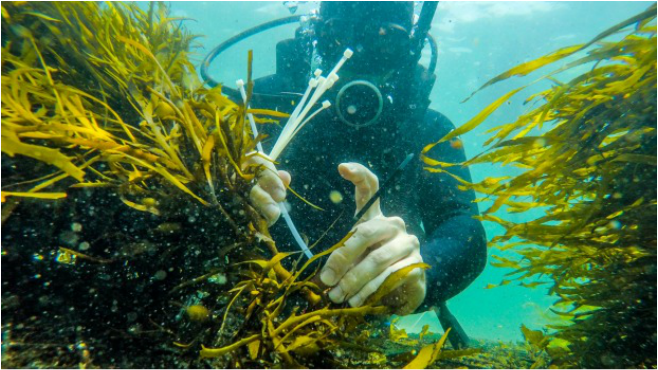

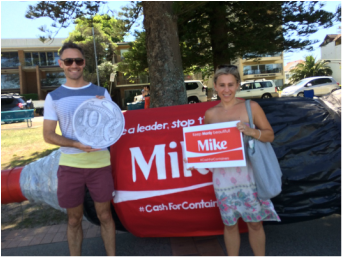



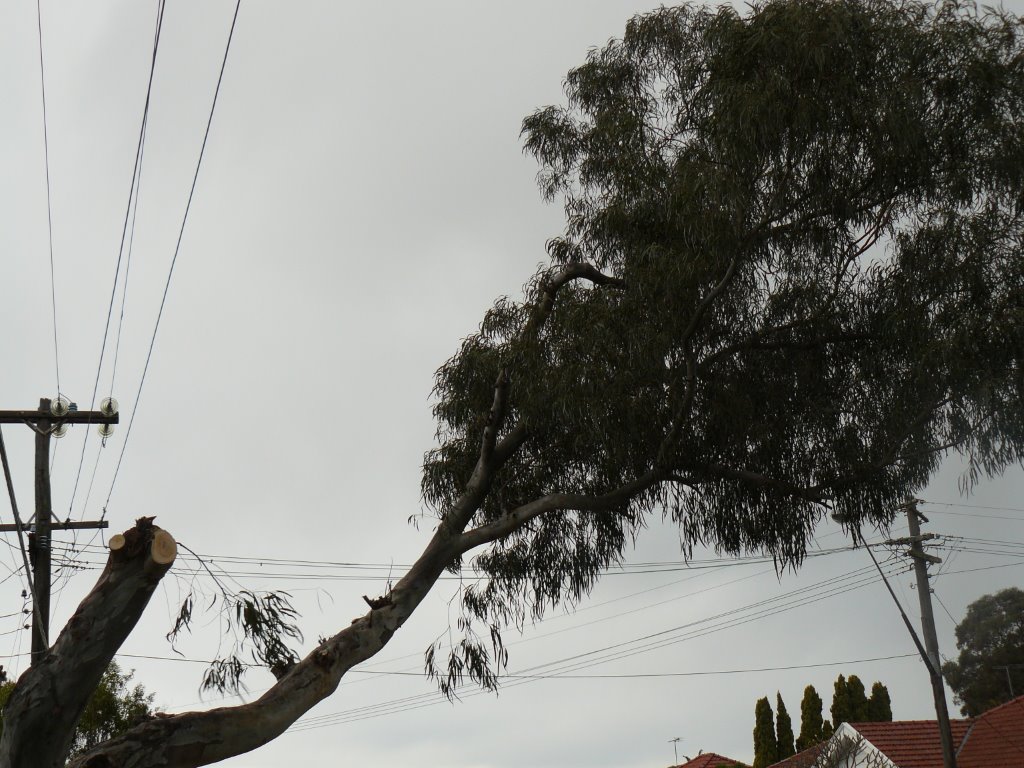
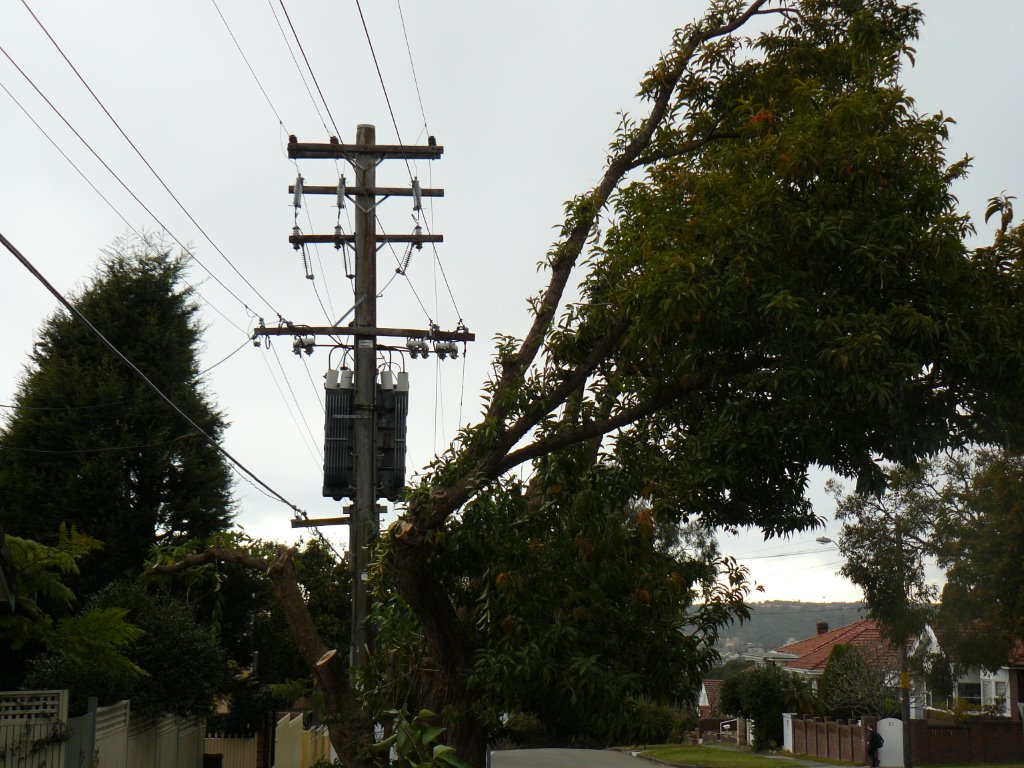

 RSS Feed
RSS Feed


